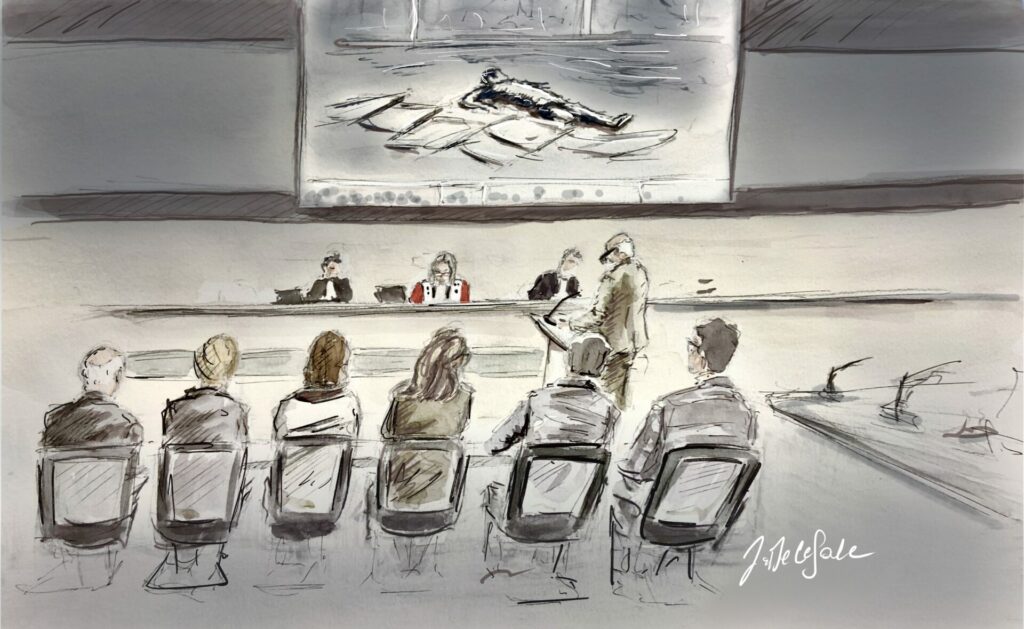Throughout his 15 hearings and interrogations, terror accused Osama Krayem presented himself as a convinced adherent of the Islamic State (ISIS) terrorist group who did not, however, endorse all its actions.
He maintained that he had not participated in making the bombs, but investigators doubt this.
On Monday morning in the Brussels court of assizes, Deputy Chief Investigator Frédéric Vanesse retraced the path of Osama Krayem leading up to the 22 March 2016 attacks in the capital of Europe.
Trip to Syria
The investigator outlined Krayem’s journey to Syria, a trip that took place in the summer of 2014, 12 to 16 months after the Swede began to show an interest in the Syrian conflict.
He stayed a little over a year in Syria, where he fought – and was wounded – and took part in the staged and filmed execution of a Jordanian army pilot. He corresponded a lot with his sister and brother, back home in Sweden.
In September 2015, he set off for Europe again. His departure was linked, he said, to differences of opinion on matters of faith. He said his goal was then to return to Sweden.
He took the migratory route at a time when the reception crisis was in full swing in Europe. On his way, he met Sofien Ayari and Ahmad Alkhald, with whom he travelled all the way to Germany, where Salah Abdeslam picked up the equipment on 3 October 2015.
Back in Brussels
From his arrival in Brussels on 3 October 2015 to his arrest by the police on 8 April 2016, the accused went through all the hideouts of the terrorist cells that struck Paris and then Brussels. There were weapons in all the flats he went to, he claimed in hearings.
In the last days before the attacks in Brussels, he stayed at the Avenue des Casernes and regularly accompanied Ibrahim El Bakraoui to buy material for making the bombs.
After the midday break, investigators and investigating judges continued the presentation of Osama Krayem, talking more specifically about his revelations during hearings.
From the first of these, the day after his arrest, until the end of the investigation, he showed himself to be “cooperative,” in the words of the police and the investigating judges who questioned him on numerous occasions. No gratuitous unpacking, but he gave answers to the questions put to him. No any incident was ever reported with the accused.
Adheres to ISIS ideology but does not support all its actions
He confirmed fairly quickly that he should have detonated his bomb in the same metro as Khalid El Bakraoui, but said he gave up and got rid of the explosive in the flat on Avenue des Casernes.
Among other statements, he maintained that Salah Abdeslam and Sofien Ayari “knew nothing of the planned attacks in Brussels” and that Hervé Bayingana Muhirwa, whom he called Amine, “was not part of the group.”
His story of his relationship with ISIS also remained constant throughout the hearings. He never disputed his membership of the terrorist group, rather he claimed it. He did not endorse all the acts carried out in the name of the group, he said, but adherence to its ideology must be comprehensive so he adhered to it unconditionally.
'Killing people ... is a reaction'
According to him, “killing people is not a pleasure, it is a reaction.” He presented the various attacks that have hit Europe as counterattacks following the international coalition’s intervention in Iraq and Syria.
A lengthy video of the re-enactment of the events at the Avenue des Casernes, lasting over an hour, was then shown to the court, a viewing that again brought Ibrahim Farisi out of his depth, with his brother, his lawyer and the presiding judge repeatedly asking him to calm down.
The hearing concluded with the defendant’s character investigation and some questions from the jurors and assessor judges. It was adjourned shortly before 6pm and was scheduled to resume on Tuesday to consider the roles of Herve Bayingana Muhirwa, Ibrahim Farisi and Sofien Ayari.

